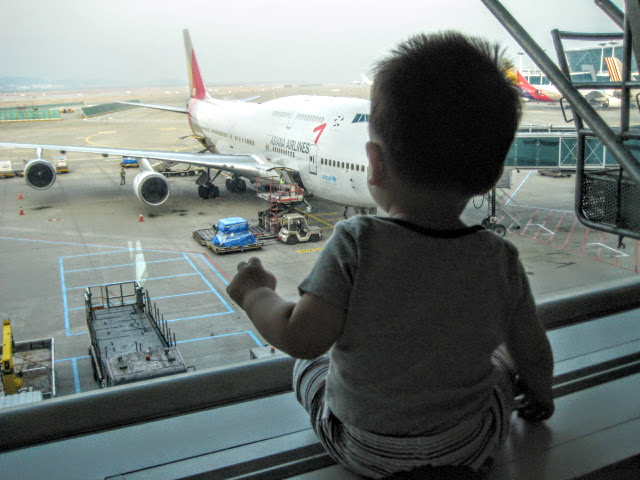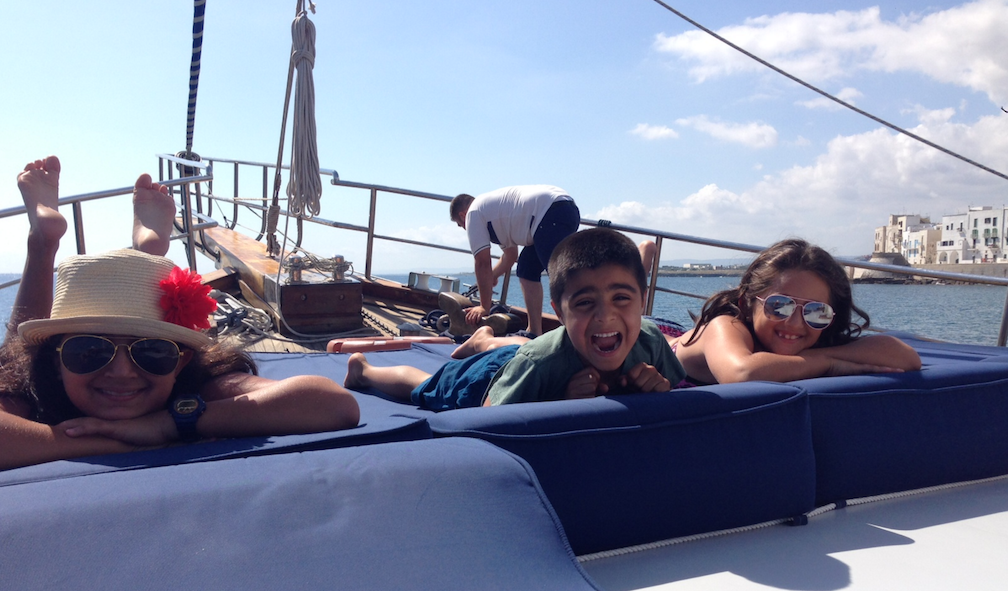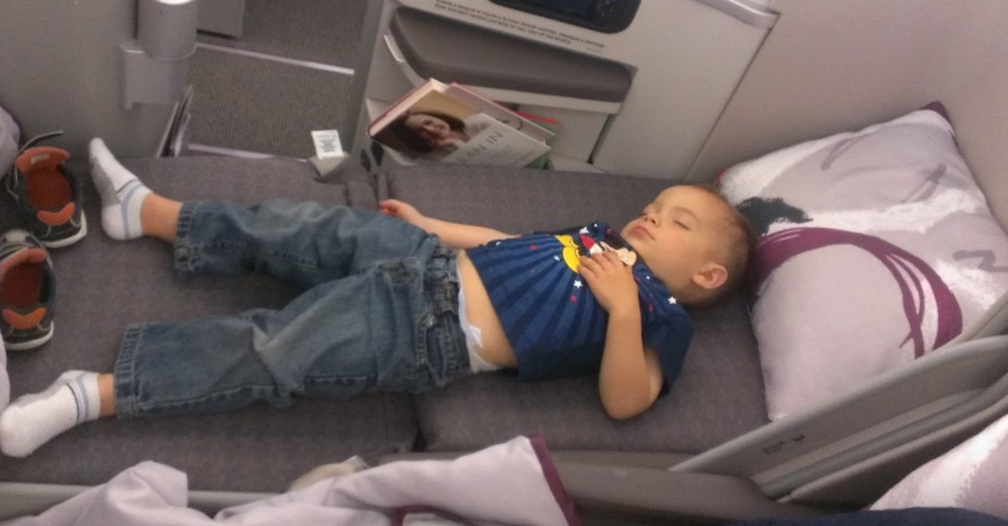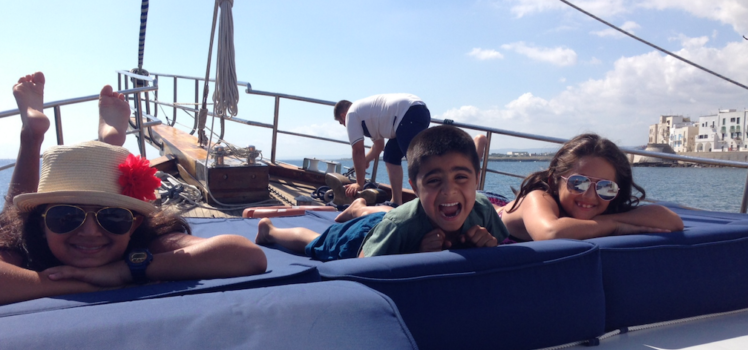Practical Advice from Experts, Parents, and Travel Veterans
When adults travel abroad for the first time, the experience frequently becomes a cornerstone event in their lives. It may be as part of a college exchange program, a business trip during their first job, or perhaps a honeymoon. Almost invariably, the time spent out of the country is memorable and rewarding. It shapes the way the traveler frames the rest of his or her life, becomes one of many favorite stories to tell at parties, and creates a new appreciation and closeness with the people and culture of that foreign land.
Kids can have a similarly meaningful experience with international travel – either on their own or with their parents and guardians. With a little careful planning, the trip can be fun, easy, safe, and provide all of the benefits (and more) that adults experience when traveling abroad.
In this article, you will hear from scientific and medical experts, parents who have traveled extensively with their kids, as well as hardened travel veterans who have insider tips on what makes a good trip great.
The Unique Benefits of Traveling Abroad for Kids
While many travelers look back on the excitement and memory of their first international trip as an adult, the experience can be even more impactful for kids traveling abroad. It provides unique developmental, cultural, and educational benefits that are impossible to replicate in an environment like a classroom.
The benefits of traveling are not fully reflected in a simple catalogue of the sights children see along the way. Neurobiologist Erin Clabough, Ph.D., an assistant professor at Hampden-Sydney College in Virginia and mother of four young children, says that long after the trip is over and kids return home, creativity increases in children who have experiences with more than one culture. It helps them to apply new ways of thinking about a situation or problem from these cultures, and it challenges and expands on their own ideas. “Fostering creativity in the minds of your children,” says Dr. Clabough, “although not as easy to visualize, can be an equally important reason to finally take that trip you’ve been planning.”
Dr. Clabough touches on the growing trend among parents for providing experiences and not just material positions for their children. Particularly when traveling abroad, these experiences reinforce core values like tolerance, patience, empathy, and family bonding.
As Grainne Kelly, founder of BubbleBum describes it, “Memories are made by people, not places. When kids look back on family vacations, it’s not the destination they will remember as much as the time they spent with family. Experiences bind families together.”
From a cultural perspective, traveling abroad can be an amazing gift for kids; firsthand experience of new cultures and history helps them learn to respect how others live in various regions. It can change their perspective on how differences can be a common thread between all people. This is particularly true in countries where people from various religious and cultural backgrounds live in harmony. Kids learn to see what people have in common and not just focus on the apparent differences.
From an educational standpoint, especially for children from the U.S., traveling abroad can open their eyes to the way people live outside their home countries in ways that just can’t – or won’t – be captured in a classroom.
For example, Patrick Sweeny, parent of three children and owner of Find the Adventurer Within, has provided his kids with many hands-on international experiences. They have seen bullet holes in Dublin buildings and learned about the Easter Uprising, marveled at a family of five sharing a motorcycle in Costa Rica, and witnessed kids their own age milking goats in Spain. He also says that they now have “a new appreciation and gratitude for the the fact that their Nike running shoes are not a pair of sandals made from a reclaimed tire.”
Similarly, Rick Wong, a parent and seasoned traveler who regularly logs over 200,000 international travel miles each year, points out that in the U.S. kids do not learn how the rest of the world lives. By taking his children on trips to places like Tokyo, Hong Kong, Munich, and Buenos Aires, they have the opportunity to experience firsthand that residents in those countries know a lot about the United States. Conversely, most people in the U.S. know very little about them, including language. Wong says that it changed the way his kids think and the opportunities they seek out for themselves: “It made our kids choose subjects in school that taught them about foreign cultures.”
Practical Considerations: Tips, Tricks, and Advice from the Experts
If you have the inspiration to help your children travel abroad, it doesn’t mean you should simply spin the globe, pick a location, and book a ticket today. International travel with children, especially their first trip, takes foresight and planning.
Select the Appropriate Destination
Choosing the most appropriate travel abroad experience is an art and science that brings into consideration multiple factors related to the child. The child’s age, temperament, and goals for the trip should all play a role in identifying a destination that will hit all the check-boxes for a fulfilling trip. It should push their boundaries without being overwhelming, provide an age-appropriate exposure to culture, and educate them about their travel destination beyond what can be found in a book or online.
While visiting a cool archeological site might work for one kid, having the opportunity to run and burn off energy on a beach may be essential for another.
The appropriateness of the destination also has much to do with the attitude of the inhabitants, not just the amenities they provide. Kaamna Bhojwani-Dhawani, founder and CEO of MomAbroad.com, recommends considering the child-friendliness of the country you visit from this perspective. “You can go to a country like Italy where you will scarcely find a high chair or a changing table,” says Bhojwani-Dhawani, “but people love children and often regale them with hugs and freebies.” However, she recommends carefully considering safety and practicality when picking an international destination: access to clean water, reliable health facilities, and a stable political situation are essential. While she says this may sound dramatic, she’s come across these issues recently when considering trips to countries like Tunisia and Egypt.
Do the Prep Work – and Get the Kids Involved
Being well prepared for your trip will make the experience much easier and more enjoyable. Many children may have a fear of the unknown and they will be much more comfortable with the trip if they learn about it beforehand.
Share maps, books, photos, and the itinerary before you leave for the trip so kids can start thinking about all of the new places, people, and experiences they will have abroad. If they are anxious about a particular part of traveling, Andrea Ross, CEO and Founder of Journeys Within, suggests making a list. “I have kids list things that made them nervous. This can be anything from new food to zip lining to talking to a new friend. I’ve found that when kids know they will be able to write down an accomplishment later, it allows them to be brave in the moment.”
Ross also suggests booking your trip with a reputable tour company, even if you are an experienced traveler. Leaving the planning to an expert means that you can focus on your family rather than fretting about trusting online hotel reviews. Travel experts also have insider knowledge about things like which hotels include free laundry, which guides work best with children, and which travel experiences really appeal to kids. Travel experts can also arrange a private car and driver, which makes for a more flexible schedule.
Keep Kids Happy, Healthy, and Safe
Nothing can derail a great travel abroad experience quicker than an unhappy or sick traveler, whether that traveler is an adult or a child. While you can never mitigate every risky circumstance, there are a lot of strategies you can employ to put yourself and your child in the best possible position for a happy and healthy trip.
Jet lag is one of the most common problems with traveling abroad and it is a terrible way to start an international travel experience. It typically occurs any time you travel across two or more time zones. Your internal clock, or circadian rhythms, are out of step with the time in your destination. This can result in a disruption of your sleep-wake cycle and even your appetite and digestion.
Dr. Eugene Emmer, a physiologist and creator of Teach Your Toddler to Read, suggests the following strategy for battling jet lag.
On longer flights of 10 hours or more, keep children occupied for the first half of the flight. Provide them with books, videos and video games, puzzles, etc. Now is the time to relax rules about media consumption in favor of engagement. Then encourage kids to sleep for the last four to five hours of the flight. When you arrive at your destination, try to keep your child awake until their normal bedtime in the local time zone. The next morning, they should be rested and ready to go. This strategy works very well for flights departing in the afternoon. You may need to adjust this depending on your departure and arrival times.
It is also a good idea to consider purchasing travel health insurance for you and your child. While you hopefully will not need it, this type of insurance can provide medical coverage up to $1,000,000 for as low as $50 per traveler on a 10-day international trip. As part of many policies, the insurance company will help you locate appropriate medical care in the countries you are visiting. This added safety net is a smart and economical way to gain peace of mind that you are covered in an emergency.
Go Local for a Richer Experience
“Going local” can help kids make their trips more about the experiences than sightseeing. While sightseeing in the traditional way can be rewarding and should still be part of your trip, going off the beaten path offers something extra special. By becoming part of the local community for a time, your child is immersed in culture and day-to-day life around them.
Home-swapping websites like Love Home Swap, Knok, HomeLink, HomeExchange, and Intervac can help facilitate a home exchange between you and a family overseas. Sherry Lombardi, CEO of hulafrog.com, recently traveled this way to Paris and Italy with her husband and two children. As an added benefit, kids get some of the creature comforts of home. “It was so amazing,” Lombardi says, “You’re immersed in the local culture, not the touristy stuff. And you get to have a kid’s room with toys, bikes, and games because you are trading houses with other families with kids.”
In most cities, if you walk two or three blocks away from the main road, you encounter amazing culture and food. Older kids may even be able to explore these areas on their own. Make sure they have a business card from the hotel where you are staying, a local cell phone with your phone number and the number of the hotel pre-programmed, and ensure that they always travel as part of a group. This is not safe in every city, so it is best to check with your hotel, hosts, or people who know the area first.
What to Do When Things Go Wrong (and They Will!)
Missed connecting flights, lost passports, delays through security checkpoints…despite your best plans, there will always be a hiccup or two during your travel. The best advice from our experts is to expect the unexpected. Make the unexpected part of the adventure, and also part of the learning experience. It can teach kids situational awareness, the value of planning ahead and problem solving, as well as how to be patient when the going gets tough.
Above all, remember that kids learn from your example. Kaamna Bhojwani-Dhawani of MomAboard.com provides this advice: “Calm parents make calm children, particularly during travel. Keep your emergency numbers with you, like the local police and your embassy, and assume that all will be ok.
Photo credits:
- Kid Traveling, courtesy of CNN
- Italy, courtesy of MomAboard.com
- Family in Airport, courtesy of Gatwick Airport
- Infant Looking at Plane, courtesy of Bill Conn


